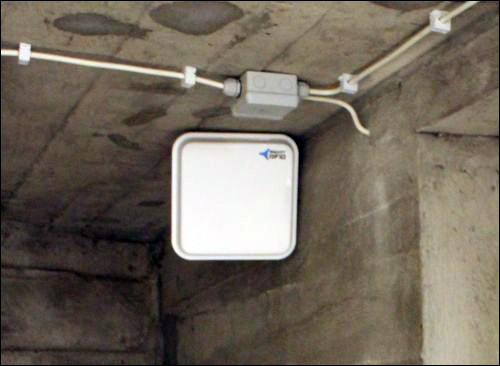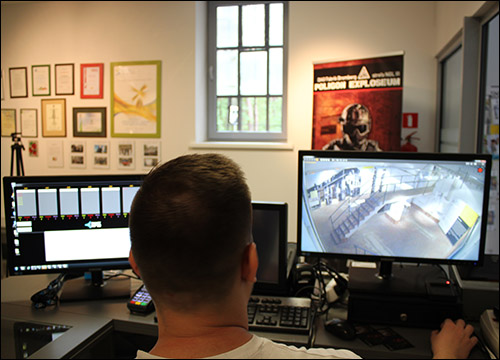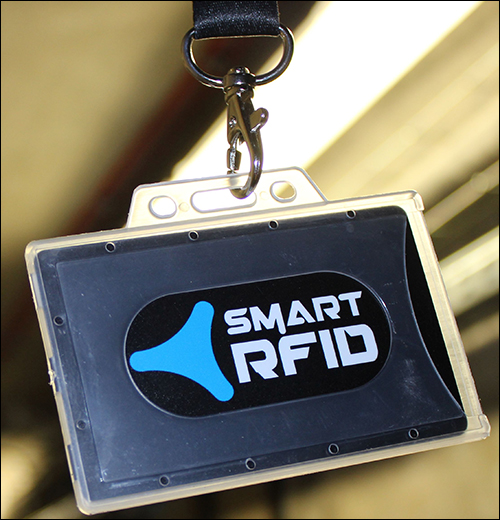Feb 02, 2016A museum at a Polish World War II-era explosives factory is testing a radio frequency identification solution to track its visitors' locations. The system also provides access control as the tourists explore its abandoned tunnels, production line and warehouses.
The Exploseum Military Technology Center consists of a cluster of seven buildings used for the DAG Fabrik Bromberg explosives factory built by Germany during World War II. The site was the source of explosives manufactured by the German military during the war, and was manned largely by Polish prisoners of war. The museum features one of the factory's two nitroglycerin production lines, says Kinga Długosz, the Exploseum Military Technology Center's finance and administration deputy director.

The site, which consists of warehouses and factory buildings joined by an underground tunnel network, opened its doors to the general public in July 2011. Until recently, the facility was accessible only by visitors accompanied by a guide who opened locked doors between one building or tunnel and another, due to the potential hazards that could befall an unaccompanied guest. "Visiting had been restricted to specific hours—even for one person," Długosz says.
However, with risks aside, the Military Technology Center determined that the best way for visitors to experience the site was to allow them to walk around independently. Therefore, the Military Technology Center asked Smart Technology Group, a Swiss and Polish technology firm, to develop a solution combining ultrahigh-frequency (UHF) and high-frequency (HF) RFID technology to control access and monitor visitors as they move around the premises.
Exploseum is far from a typical museum, says Karolina Kozłowska, Smart Technology Group's president. Tourists could become lost in the large area, she explains, or suffer a medical emergency and be unable to request assistance.
With the RFID solution in place, visitors arriving at the site proceed to the reception desk. There, Kozłowska says, they each pay for a ticket and receive a Smart Technology Group lanyard, which is worn around the visitor's neck. Built into the lanyard is a passive UHF EPC Gen 2 RFID inlay made with an Alien Technology Higgs3 chip. (Smart Technology Group manufactured the RFID-enabled lanyards, as well as the readers and reader antennas.) Attached to the lanyard is a card with built-in 13.56 MHz passive HF RFID inlay compliant with the ISO 15693 standard. Due to its short read range, the HF RFID card is used to control access to locked doors, thereby ensuring that the doors are unlocked only when a visitor is within the immediate vicinity. The UHF RFID technology, on the other hand, has a much longer read range, making it more suitable for monitoring the locations of visitors on site. The museum has also installed closed-circuit television (CCTV) cameras to offer an additional layer of security.
Once inside the facility, a visitor approaching a doorway can simply hold his or her lanyard near the Smart Technology Group ACHF reader installed there. The reader captures the ID number of the lanyard's HF RFID inlay, sending a prompt to the door latch to open. The buildings and tunnels are locked only from the outside, so that in the event of an emergency—such as an injury resulting from a fall—visitors can still exit without needing to unlock the doors.
Once a visitor has entered a building or tunnel, the UHF RFID inlay of that person's lanyard is used to automatically track his or her location. Smart Technology Group installed seven of its Master 01 UHF RFID readers, as well as seven A24 antennas, to capture the ID encoded to each lanyard's UHF RFID inlay. As an individual moves from one zone of the museum to another, the Master 01 readers capture that ID number and forwards it to a PC running the Smart Technology Group software. The museum's management can sign into the software to view the visitor's zone location in real time.
If an emergency were to occur at the museum, managers could access the software and view whether anyone was still located within the buildings or tunnels, as well as refer to the cameras for confirmation. That technology also enables them to ascertain where an individual with a badge might be located if he or she failed to exit the museum at the end of the day.
If a museum administrator notices that a guest has entered a restricted zone or seems to be having difficulty finding a tunnel's exit door, Długosz explains, a museum guide can be immediately dispatched to help that individual.
"There are a lot of narrow corridors and tunnels," Długosz states. Such an environment may cause a visitor to faint or experience a panic attack due to claustrophobia, though such an incident has yet to be reported. In the event of such an occurrence, the security administrator can easily spot a tourist behaving suspiciously (standing absolutely still for some time, for instance) and verify the situation.
Altogether, the UHF system covers an area measuring 1,819 square meters (19,580 square feet), which is the majority of the public area.

There are a total of 100 lanyards, since no more than 100 visitors are permitted onsite at any given time. While each of a lanyard's HF and UHF RFID inlays is encoded with its own unique ID number, Kozłowska says, those IDs are not linked to the wearer's personal information. "During [their] stay in Exploseum," she states, "nothing is written or stored in lanyards."
"Right now, we are testing RFID functionality in the context of Exploseum needs," Długosz reports. "At least one full tourist season is needed to gather all necessary data for us to come to strategic conclusions and decide whether to implement more RFID solutions."
However, Długosz says he is pleased with the technology so far. "Right now, Exploseum exhibition can be visited by one person at any time and on one's own, which is much more comfortable for the majority of tourists," he states. "Such convenience is also positively influencing the public image of Exploseum."



